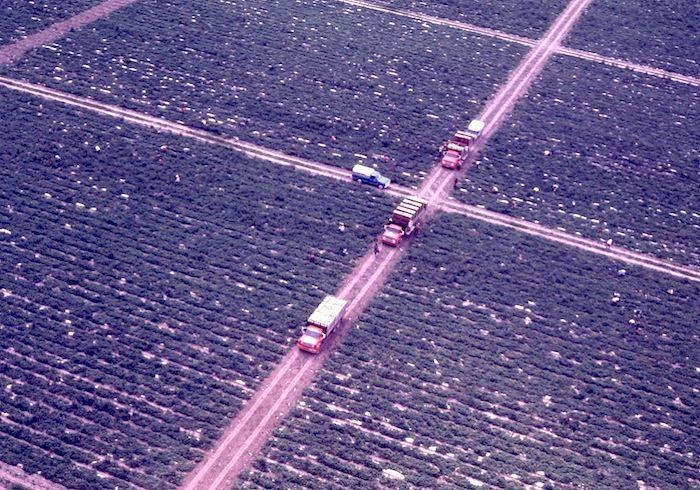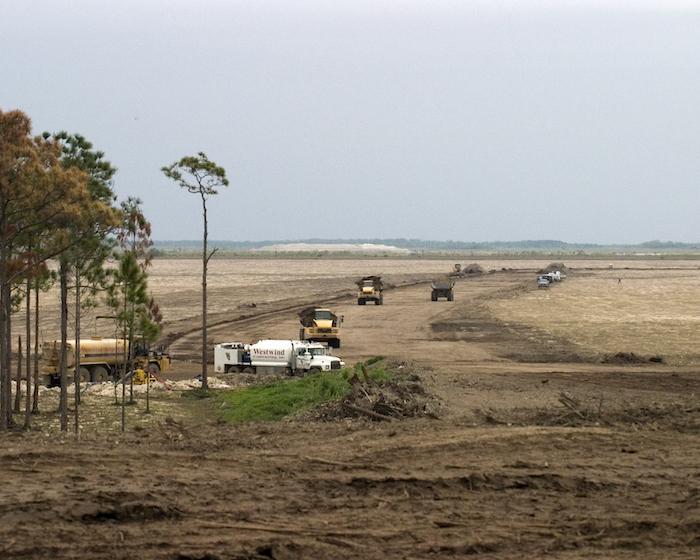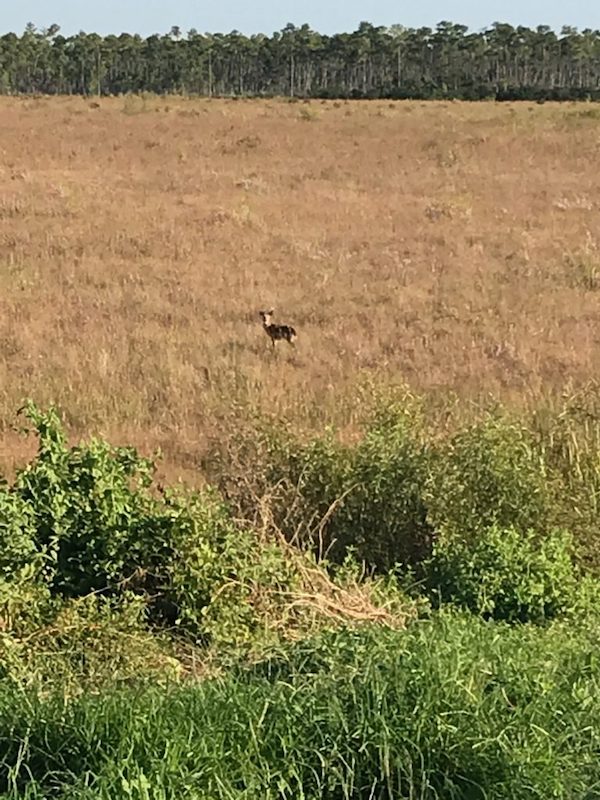Hole-in-the-Donut Lesson Plan
Written by: Susana Perez
This past week was a bit challenging as a Cultural History Educator intern, as it was my first time developing an educational lesson plan. One of the main components of my internship role is to develop a program for high school students based on an area in the park named the “Hole-in-the-Donut.” The lesson plan I developed (attached below) is a debate where the students consider the National Park Service (NPS) position and the farmers in the land acquisition issue that took place in 1975.
As part of the Everglades Educational Program, the lesson plan activities must meet the Florida Sunshine State Standards. This debate activity covers cultural and educational history. The role of the students is to participate in a mock trial activity during the HID trial to determine whether the farmers or the National Park Service should have the rights to the land. They will be provided with detailed accounts of the arguments and viewpoints of each group, as well as primary source newspapers related to the debate in 1975 surrounding land acquisition. The students will be divided into two groups, the NPS and the farmers. Each group will present a cohesive argument to the Park Rangers. Issues that will be discussed include restoration, Everglades’ ecology, South Florida’s economy, and migrant worker status. After each group has presented, Park Rangers will decide the “winner” based on the presentation of their ideas. This engaging activity fosters the students’ critical thinking skills by engaging them with newspaper sources to supplement their arguments. It also gives them a glimpse into the complex process of lawmaking in the United States.

Before 1975, a portion of what today is referred to as the “Hole-in-the-Donut” in Everglades National Park used to be agricultural land. Picture source: NPS

Restoration of HID began in 1989. Following the cessation of agricultural farming, disturbed HID soils enabled the growth of Brazilian pepper (Schinus terebinthfolius); “Florida Holly”. For these areas to return back to its native scenery, equipment such as the one pictured, was necessary for the removal of the substrate down to the bedrock. Picture source: NPS (This picture is roughly 5 years old)

As of 2020, 6063 of the 6,300 acres of previous farmland have been restored. Once areas have been restored, the native vegetation and animals, such as this white-tailed deer, return.
National Park Service VS Farmers
Grade Level: 9-12 grade
Subjects: American History, Geography, Science, Civics and Government, Public Speaking
Duration: 45 minutes-1 hour
Location: Outdoor
Florida Sunshine State Standards: SS.912. A.1, SS.912. G.3, SS.912. G.5, SC.912. L.17, SC.912. N.4, SS.912. C.2.10, SS.912. C.3.13, SS.912. C.3.12, SS.912. C.2.3, SS.912. C.2.4
Key Terms: Opening Statement, Closing Statement, Mock Trial, Debate, Objection, Overruled, Sustained, Impartial Jury, Hung Jury, Rebuttal, Restoration, Invasive Species.
Essential Question(s)
- How do national parks help us to tell the stories of our cultural heritage?
- How can human activity have a profound effect on our natural environment?
- What is the essential role of the Everglades National Park?
Materials
- Newspapers
- Information Binders
- Paper and Pencil
Objective : The students will be able to discuss the use of the Everglades from the viewpoint of a farmer and the National Park Service/ conservationists. They will also explain how the courts decide the use of natural resources and land acquisition.
Method : The students will participate in a mock trial activity during the HID trial to determine whether the farmers or the National Park Service should have the rights to the land. They will be provided with detailed accounts of the arguments and viewpoints of each group, as well as primary source newspapers related to the debate in 1975 surrounding land acquisition.
Background
Long before the establishment of Everglades National Park, large parcels of land were used for vegetable production, growing corn, beans, tomatoes, and green leafy vegetables. As early as the beginning of the twentieth century, migrant workers, mainly from Mexico, would farm the fields of what came to be known as the “Hole-in-the-Donut.” It was given this title because the “Hole” represented the agricultural area, while the “Donut” was incorporated into parkland.
In the 1950s and 60s, farmers started using rock plowing as a farming technique in the Hole-in-the-Donut. The plow made it easier to break up the limestone substrate that would mix with the soil. The largest agricultural operation in the Hole-in-the-Donut was Iori Farms, owned by the Iori brothers, who purchased 4,400 acres in 1955. The Iori headquarters consisted of a block quarters structure for its field laborers, a separate bath house, and a warehouse building for tractor parking. Today, the block quarter structure is the Dr. Bill Robertson Jr. Center. When the Iori’s stopped paying their mortgage, the property was taken over by the Farmer’s Home Administration. Interestingly, the U.S. Army used 700 acres of the former Iori property as the Nike missile base from 1965 to 1979.
The Park became concerned about the farmers’ use of herbicides and pesticides to manage their crops because pesticides could harm wildlife outside the HID. Due to disagreements over boundaries, occurrences of criminal activity, and differing perspectives of how the land should be used, the relationship between park personnel and the Iori family grew acrimonious over time. The Park began looking into purchasing and restoring HID land to meet its purpose of maintaining the Park for future generations. In 1970, Congress passed P.L. 91-428 to amend the boundary of Everglades National Park and allow the Department of Interior to acquire land not included in said boundary—in this case, the agricultural area compromised Iori farms. For farmers, this meant the loss of an income for them and their dependents. For the economy, it meant a loss of revenue.
The South Florida Tomato and Vegetable Growers, Inc. led the argument for continued farming in the “Hole.” They argued that the farming in the “Hole” added 25 million dollars to the local economy and seasonal employment for 3,000 migrant workers. They contracted EcoImpact, Inc., to study the ecological impact of farming. The report concluded that farming did not have harmful effects on the environment. The NPS doubted the report’s authenticity, claiming that it served the interests of the agricultural sector. The migrant farmers were devastated by the idea that they would not have guaranteed seasonal employment, urging many to demonstrate their grievances along the main park road. A group called Organized Migrants in Community Action (OMICRA) led scattered protests through the summer of 1975. A notable sign read: “survival of people is more important than enlarging a park. Support The Hole-in-the-Donut”. They, however, were unsuccessful, as the NPS already owned the acreage.
Restoration of HID began in 1989 to restore 6,300 acres of previous farmland. The disturbed soil in this previous area enabled the growth of Brazilian pepper (Schinus terebinthifolius). Everglades National Park and its partners guarantee a thorough program of exotic plant removal and wetland restoration for one of the most crucial habitats in the Everglades through this mitigation and science effort. As of 2020, 6,063 acres of wetlands have been restored. Only 237 acres to go.
Teaching Procedures
- Students will be dropped off at the start of Research Road before starting the HID trial near Hidden Lake.
- Park Ranger will start the activity by giving a brief historical overview of the “Hole-in-the-Donut,” its past uses, and the restoration process.
- Divide the students into two groups: Farmers and National Park Service.
- Provide the students with the information binders and newspapers. Explain to them that the Park Rangers will act as the “jury” who will listen and decide who should have land rights.
- Give each group 20 minutes to prepare: a one-minute opening statement listing their main arguments, a closing statement, and a rebuttal (subject to change) to defend and counteract the main point of their opponent.
- Give each group time to provide their opening statements. The rangers will take note of the main arguments presented.
- The students will reconvene with their groups to edit their closing and rebuttal arguments.
- Give each group time to deliver their closing statements. After each group has delivered their closing, allow each one to deliver a rebuttal refuting the reasoning behind their opponent’s argument.
- After both teams have finished, the jury will make a final decision as to who gets to keep the land and why.
Evaluation
This activity reflects on the ecological impact human actions can have on an environment and the dependence those individuals have on that environment. It also shows organized groups and individuals’ influence on legal decisions, in this case, land acquisition.
Explain the importance of civic participation. Well-organized groups often propose arguments and ideas which they present to lawmakers and judicial persons. Teachers can encourage students to write a mock-up to their lawmakers expressing the importance of conservation in the Everglades.
Interested in conservation efforts and want to learn about American Conservation Experience? If so, click here to view our programs, including our Conservation Crew and Emerging Professionals in Conservation (EPIC) programs. Click here to view conservation project locations across the United States.